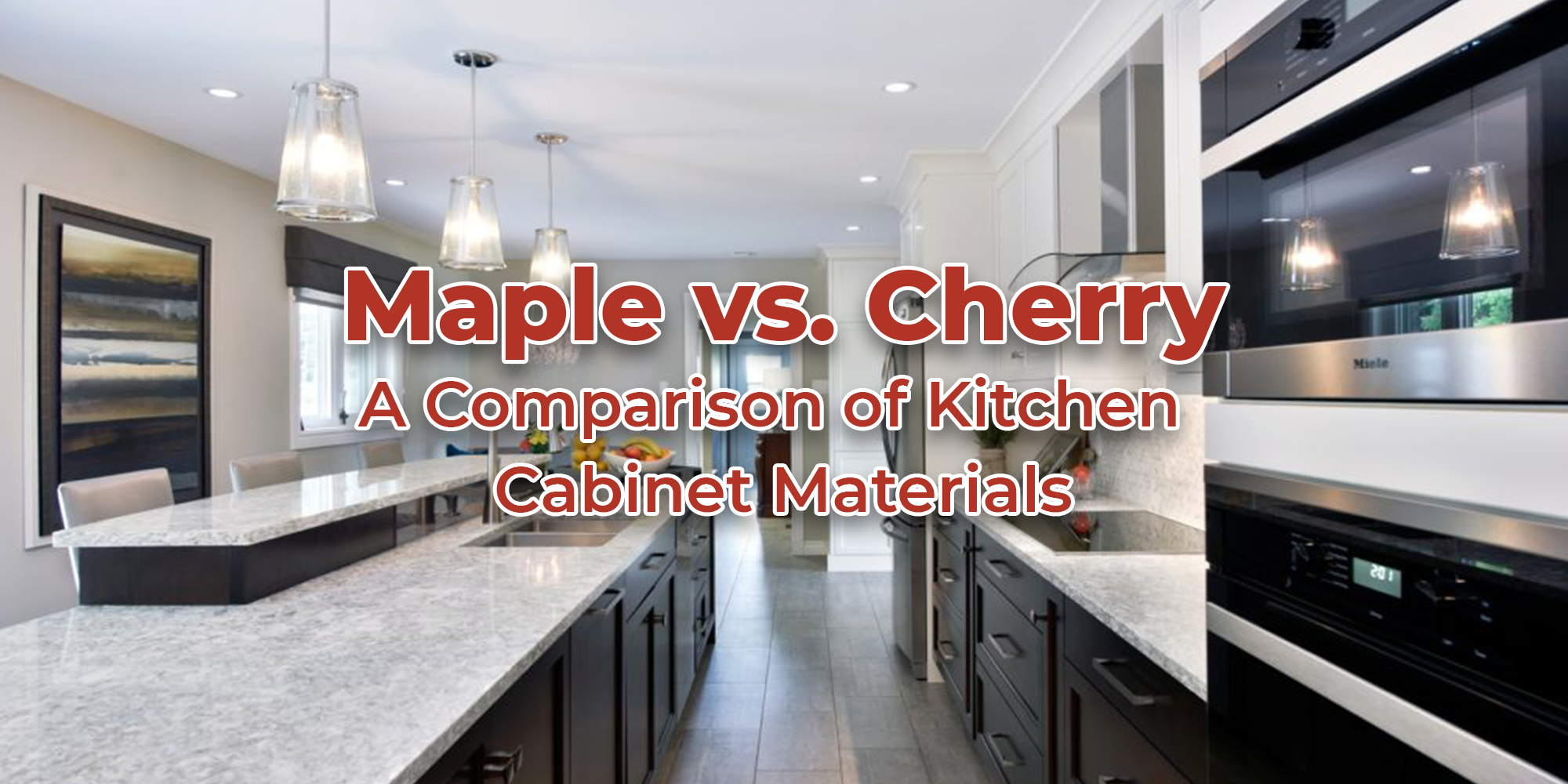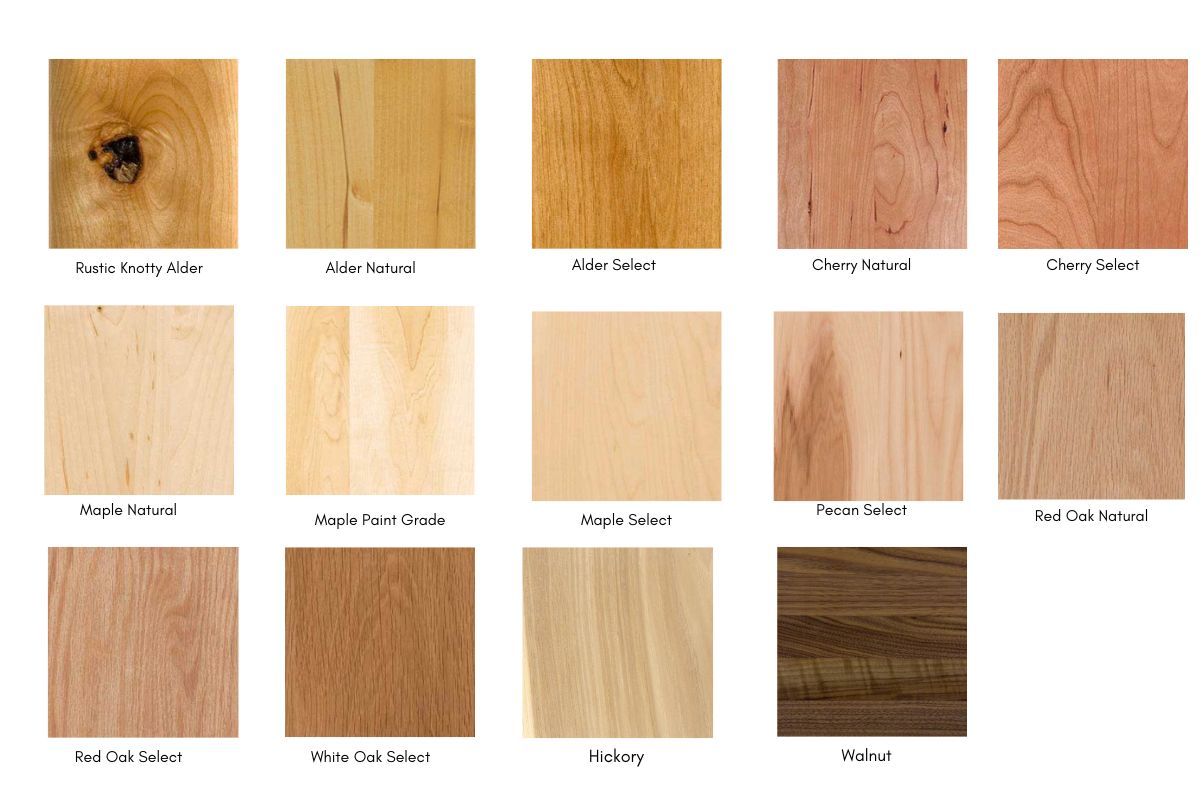Aesthetics and Style: Maple Vs Cherry Cabinets

Maple and cherry cabinets are both popular choices for kitchens and bathrooms, each offering a distinct aesthetic that can significantly impact the overall style of your space. The choice between these two wood species often comes down to personal preference and the desired ambiance for your room.
Visual Appeal of Maple and Cherry Cabinets
Maple and cherry cabinets offer distinct visual characteristics that contribute to their unique appeal. Maple, known for its light, clean colour, typically features a fine, straight grain pattern. This makes it a versatile option that complements various design styles. Cherry, on the other hand, boasts a warm, reddish-brown hue with a more pronounced grain pattern, adding a touch of rustic elegance.
- Maple: Maple cabinets often have a lighter, more contemporary feel. Their clean, straight grain pattern creates a sense of order and simplicity, making them suitable for modern, minimalist, or transitional kitchens. The light colour can brighten up smaller spaces and provide a neutral backdrop for colourful accents.
- Cherry: Cherry cabinets, with their warm, rich tones and prominent grain patterns, lend a traditional and sophisticated vibe. They are often associated with a classic, elegant style, making them a popular choice for kitchens with a farmhouse or country aesthetic. The darker colour can create a cozy and intimate atmosphere.
Impact of Cabinet Choice on Kitchen Style
The choice between maple and cherry cabinets can significantly impact the overall style of your kitchen. Maple cabinets, with their lighter colour and clean lines, often complement modern and contemporary design aesthetics. Their versatility allows them to be paired with various countertop materials, backsplashes, and hardware, creating a cohesive and stylish look.
- Modern Kitchen: A modern kitchen with maple cabinets might feature sleek, minimalist countertops like quartz or granite in a neutral colour, a simple backsplash with subway tiles, and chrome hardware. The clean lines of the cabinets and countertops, combined with the light colour of the maple, create a modern and sophisticated look.
- Contemporary Kitchen: A contemporary kitchen with maple cabinets could incorporate a bold backsplash with geometric patterns, a waterfall countertop in a contrasting colour, and sleek, minimalist hardware. The maple cabinets provide a neutral backdrop that allows the other elements to shine, creating a visually striking and modern space.
Cherry cabinets, with their rich colour and prominent grain patterns, are more commonly found in traditional or transitional kitchens. Their warmth and elegance complement farmhouse, country, or cottage styles.
- Traditional Kitchen: A traditional kitchen with cherry cabinets might feature a butcher block countertop, a backsplash with a simple tile pattern, and brass hardware. The combination of the warm cherry cabinets, the rustic countertop, and the traditional hardware creates a cozy and welcoming atmosphere.
- Transitional Kitchen: A transitional kitchen with cherry cabinets could incorporate a sleek quartz countertop, a backsplash with a contemporary pattern, and brushed nickel hardware. The cherry cabinets provide a touch of warmth and tradition, while the other elements bring a modern touch, creating a balanced and stylish space.
Examples of Kitchen Designs Showcasing Maple and Cherry Cabinets
Maple and cherry cabinets can be integrated into various kitchen designs, each showcasing their unique characteristics and complementing different styles.
- Modern Kitchen with Maple Cabinets: A modern kitchen with maple cabinets might feature a sleek, minimalist island with a waterfall countertop in a contrasting colour like black or grey. The island could be surrounded by bar stools with chrome frames and upholstered seats, creating a stylish and functional seating area. The backsplash could feature a simple geometric pattern, while the hardware could be sleek and minimalist in a brushed nickel finish.
- Traditional Kitchen with Cherry Cabinets: A traditional kitchen with cherry cabinets could feature a large farmhouse sink with a gooseneck faucet, a butcher block countertop with a warm, honey-coloured finish, and a backsplash with a simple tile pattern. The cabinets could be adorned with traditional hardware, such as brass knobs or pulls. The kitchen could also feature a large, rustic dining table with chairs that complement the traditional style of the cabinets.
Durability and Maintenance

Choosing between maple and cherry cabinets often comes down to aesthetics, but it’s also crucial to consider their durability and maintenance requirements. Both woods are known for their strength and beauty, but they have distinct characteristics that influence their longevity and how you care for them.
Durability of Maple and Cherry
Maple and cherry wood possess unique qualities that impact their resistance to wear and tear.
- Maple is a harder wood, making it more resistant to scratches, dents, and impact. This makes it a good choice for high-traffic areas like kitchens where everyday use can be demanding. Maple’s tight grain structure also makes it less susceptible to water damage, making it suitable for areas with potential spills.
- Cherry, while beautiful, is a softer wood compared to maple. It’s more prone to scratches and dents, making it a less ideal choice for high-traffic areas. However, cherry’s natural oils make it somewhat resistant to water damage, but it’s still advisable to wipe up spills promptly.
Maintenance Requirements for Maple and Cherry Cabinets
The maintenance needs of maple and cherry cabinets vary due to their inherent properties.
- Maple cabinets generally require less maintenance than cherry. Their hard surface is easier to clean and less prone to scratches. Regular dusting and wiping with a damp cloth are usually sufficient. When applying finishes, oil-based finishes are preferred as they offer greater protection against moisture and scratches.
- Cherry cabinets, due to their softer nature, require more careful handling. Frequent dusting is essential to prevent the accumulation of dirt and grime. Avoid using abrasive cleaners or harsh chemicals that can damage the wood’s finish. Cherry is also prone to water damage, so spills should be wiped up immediately. Regular oiling is recommended to maintain the wood’s moisture balance and prevent cracking or warping.
Preserving the Beauty and Longevity of Maple and Cherry Cabinets
Proper care and maintenance play a significant role in extending the lifespan of both maple and cherry cabinets.
- Environmental Conditions: Maintaining a stable temperature and humidity level is crucial for both woods. Avoid exposing them to extreme temperature fluctuations or excessive moisture, which can lead to warping, cracking, or damage to the finish.
- Regular Cleaning: Regular dusting and cleaning with a soft cloth and mild cleaning solution will prevent dirt and grime buildup, which can dull the finish and attract pests.
- Protective Measures: Using coasters and trivets can prevent heat and moisture damage from hot dishes or cups. Avoid placing sharp objects directly on the cabinet surface to prevent scratches.
- Refinishing: Over time, the finish on both maple and cherry cabinets may wear down. Refinishing can restore the wood’s beauty and protect it from further damage. It’s essential to choose a finish compatible with the existing one and to follow the manufacturer’s instructions carefully.
Cost and Value

When it comes to kitchen cabinets, the cost is a significant factor to consider, especially since it’s a long-term investment. Maple and cherry cabinets offer distinct aesthetics and durability, but their prices can vary significantly. Understanding the cost factors and potential value appreciation is crucial for making an informed decision.
Cost Comparison, Maple vs cherry cabinets
The average cost of maple and cherry cabinets can vary depending on factors such as quality, size, and customization options.
Maple cabinets are generally more affordable than cherry cabinets. The average cost of maple cabinets can range from $200 to $400 per linear foot, while cherry cabinets can cost anywhere from $300 to $600 per linear foot.
The price difference is primarily due to the availability and cost of the wood. Maple is a more readily available wood species, making it more affordable. Cherry, on the other hand, is a denser and harder wood that requires more skilled craftsmanship and takes longer to grow, contributing to its higher cost.
Long-Term Value and Resale Potential
Both maple and cherry cabinets are known for their durability and longevity, making them a worthwhile investment. However, their resale potential can differ based on market trends and individual preferences.
Maple cabinets are a safe and practical choice with a consistent resale value. Their neutral color and classic appeal make them adaptable to various design styles, ensuring they remain desirable to potential buyers.
Cherry cabinets, with their rich, warm tones and distinctive grain patterns, offer a more luxurious and unique aesthetic. This can make them more appealing to buyers who value high-quality craftsmanship and timeless design, potentially commanding a higher resale value.
However, the resale potential of cherry cabinets can be influenced by market trends and the popularity of specific design styles.
Factors Contributing to Price Difference
The price difference between maple and cherry cabinets is influenced by several factors:
- Wood Sourcing: Cherry wood is more scarce and expensive to source than maple wood. The availability of high-quality cherry wood can impact its price.
- Manufacturing Processes: Cherry wood is denser and harder than maple, requiring more intricate and time-consuming manufacturing processes. This adds to the overall cost of cherry cabinets.
- Labor Costs: Skilled labor is essential for crafting high-quality cherry cabinets. The expertise required to work with this dense wood can result in higher labor costs compared to maple cabinets.
Maple vs cherry cabinets – The debate between maple and cherry cabinets is often about more than just aesthetics. Maple’s durability makes it a workhorse, while cherry’s rich color adds warmth. But no matter your choice, consider the finishing touch: cabinet hardware black pulls can elevate your kitchen.
Black pulls offer a striking contrast against both light maple and dark cherry, adding a modern edge to your space.
So, you’re torn between maple and cherry cabinets? Both are beautiful choices, but consider the overall aesthetic you’re going for. If you’re leaning towards a bold, modern look, then black cabinets might be your perfect match. And to help you find the perfect wall color to complement those sleek black cabinets, check out this guide on kitchen wall colors with black cabinets.
Once you’ve got that wall color sorted, you can then decide if the warm tones of cherry or the lighter, brighter look of maple better suits your overall vision.
